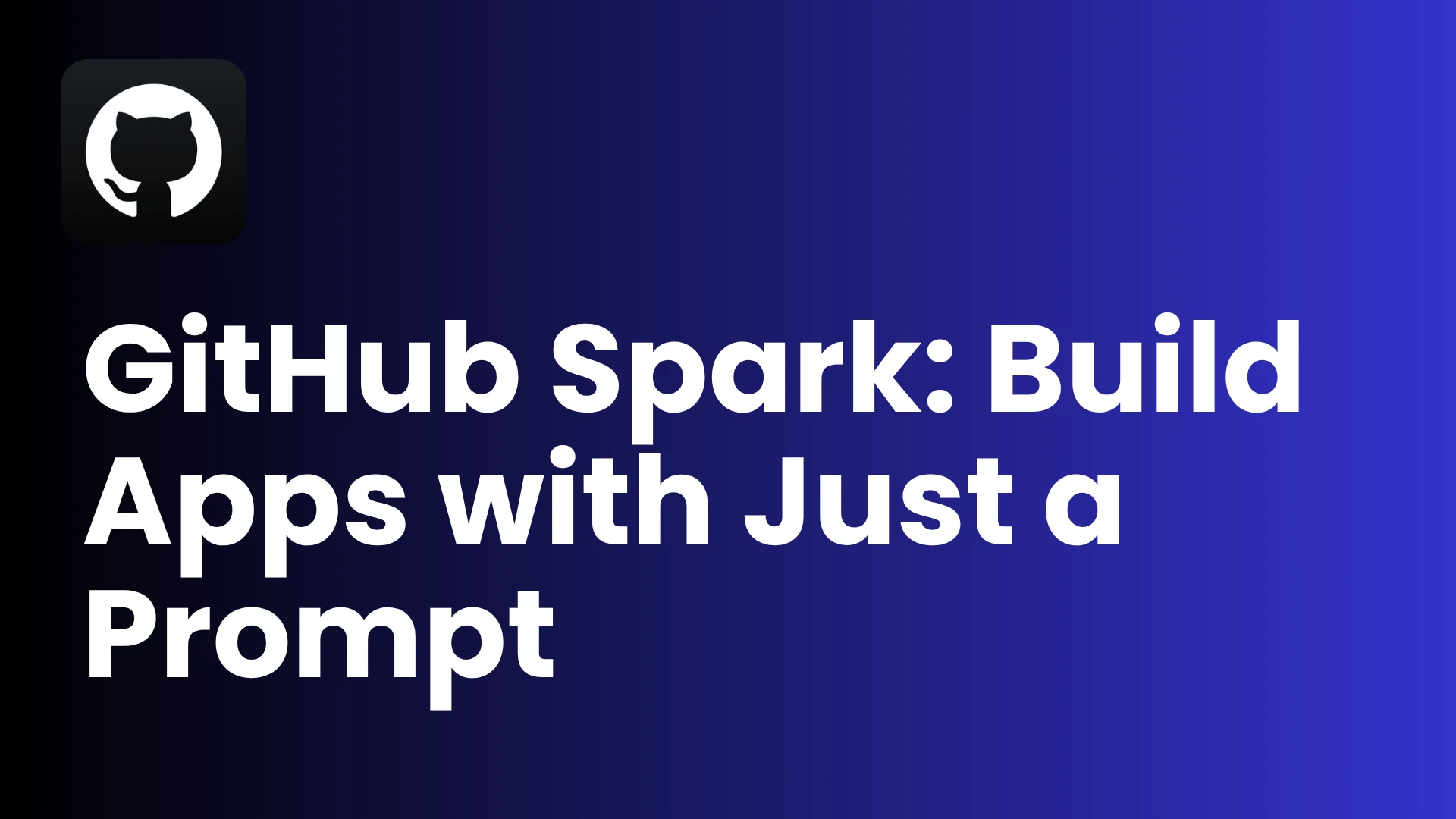GitHub Spark: Instantly Transform Your Ideas Into Powerful AI-Powered Apps

Have you noticed a buzz in the tech world lately, especially around something called "GitHub Spark"? If you've been following Google Trends, you're right – this innovative AI tool is making waves. It's not just another coding helper; it's a revolutionary platform that’s changing how we build and deploy full-stack applications. And the best part? You don't need to be a coding wizard to use it!
Let's dive deep into what GitHub Spark is, why it's so exciting, and how it stacks up against other players in this rapidly evolving AI app development arena.
What Exactly is GitHub Spark? The Magic Behind App Creation
Imagine having an idea for an app – maybe a simple internal tool for your team, a personal project, or a quick web service. Traditionally, turning that idea into a working application meant countless hours of coding, setting up databases, configuring servers, and deploying everything. It was a complex journey.
GitHub Spark steps in as your AI-powered co-pilot. Announced by Microsoft and integrated with the vast GitHub ecosystem, its core superpower is simple: it allows you to build and deploy full-stack applications using natural language. Yes, you read that right – you talk (or type) to it, and it helps create your app!
Think of it as a bridge between your brilliant idea and a fully functional application, built with lightning speed. It's currently in public preview for Copilot Pro+ users, signifying its cutting-edge development.
Here's what makes it so special:
-
Natural Language to App: Describe what you want in plain English, and Spark helps bring it to life.
-
Full-Stack Power: It doesn't just build the pretty front-end; it handles the backend logic, data storage, and deployment too.
-
AI at Its Core: Leveraging advanced LLMs like Claude Sonnet 3.5 and GPT-4o, it intelligently generates code, UI, and functionality.
-
No Setup Required: Forget tedious environment configurations. Spark provides a managed runtime, so you can focus purely on your app.
-
One-Click Deployment: Your app can go live with incredible ease, often with a single click.
-
Visual Editing & Iteration: You're not just left with code. Spark includes a visual editor for fine-tuning and allows for quick revisions and variants.
-
Deep GitHub Integration: It naturally connects with your GitHub repositories, leveraging familiar tools like GitHub Actions and Dependabot.
Why GitHub Spark is a Game-Changer: Speed, Simplicity, and Democratization
GitHub Spark isn't just a new tool; it represents a significant shift in how software is developed.
-
Unprecedented Speed: It drastically reduces the time from an initial idea to a functional, deployed Minimum Viable Product (MVP). This means faster prototyping, quicker testing of concepts, and accelerated innovation.
-
Democratizing Development: By enabling app creation through natural language, it opens up the world of software development to a much broader audience, including non-technical users, product managers, and designers who can now directly contribute to building tools.
-
Simplified AI Integration: Building AI features into applications can be complex. Spark streamlines this, allowing you to easily incorporate AI functionalities into your apps without deep AI expertise.
-
"No Sandbox" Philosophy: Unlike some tools that limit you, GitHub Spark aims for a "no sandbox" experience, providing flexibility for those who might want to dive into the code generated or integrate more complex features.
-
Cost-Effective Innovation: By speeding up development and simplifying infrastructure, it inherently offers cost savings, making rapid experimentation more viable.
The AI App Arena: Who Else is Playing?
While GitHub Spark is generating a lot of buzz, it's part of a growing landscape of tools that are leveraging AI and low-code/no-code principles to revolutionize app development. Here are some of its notable competitors:
-
Firebase Generative AI / Firebase Studio (Google): Google's offering focuses on helping developers build AI-powered applications directly within the Firebase ecosystem, often integrating with Google's Gemini models. Firebase Studio provides a cloud-based IDE for rapid AI app prototyping.
-
Replit AI (Agent & Assistant): Replit, a popular online IDE, has integrated powerful AI features. Replit AI assists developers with code generation, debugging, and even "agent" modes that can attempt to build full-stack applications from prompts, often within a collaborative coding environment.
-
v0 (by Vercel): This tool focuses on generating high-fidelity UI and backend logic from natural language or mockups, specifically for modern web stacks like Next.js and Tailwind CSS. It's excellent for quickly getting beautiful, functional frontend components and some backend scaffolding.
-
Bolt AI: A strong contender in the natural language-to-app space, Bolt AI allows non-technical users to generate full-stack applications (React, Tailwind, Node.js, Express, PostgreSQL with Prisma) from simple prompts, offering a visual editor and access to generated source code.
-
Cursor: – A fork of VS Code powered by AI. Offers deep integration of generative coding workflows—ask it to refactor, write, or explain code inside your IDE.
Choosing Your AI Ally: A Quick Comparison
When considering these tools, it's important to look at factors like ease of use, full-stack capability, scalability, integration, and community support.
The Future is AI-Powered Apps
The rise of GitHub Spark and its counterparts signals a significant shift in software development. We're moving towards a future where the barrier to creating functional applications is dramatically lowered. This isn't just about faster coding; it's about empowering more people to bring their digital ideas to life, driving innovation at an unprecedented pace.
While these tools are still evolving, their impact is undeniable. Whether you're a seasoned developer looking to accelerate your workflow or someone with a brilliant app idea but no coding background, exploring GitHub Spark and its competitors is a crucial step towards understanding the future of app creation. The trend is clear: AI is no longer just assisting; it's actively building the next generation of applications.